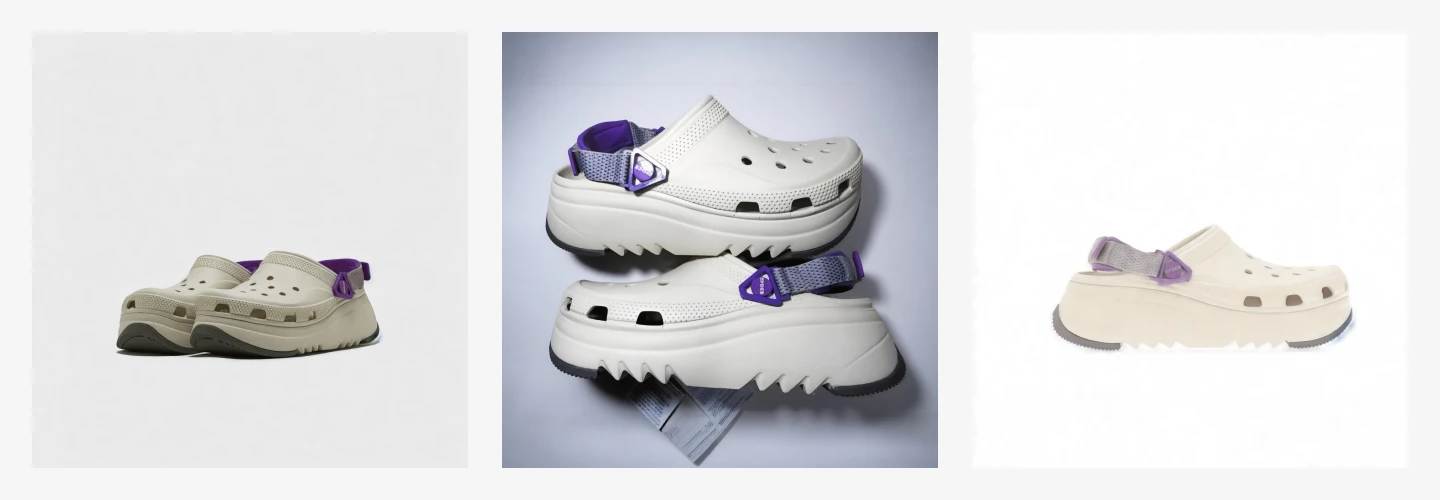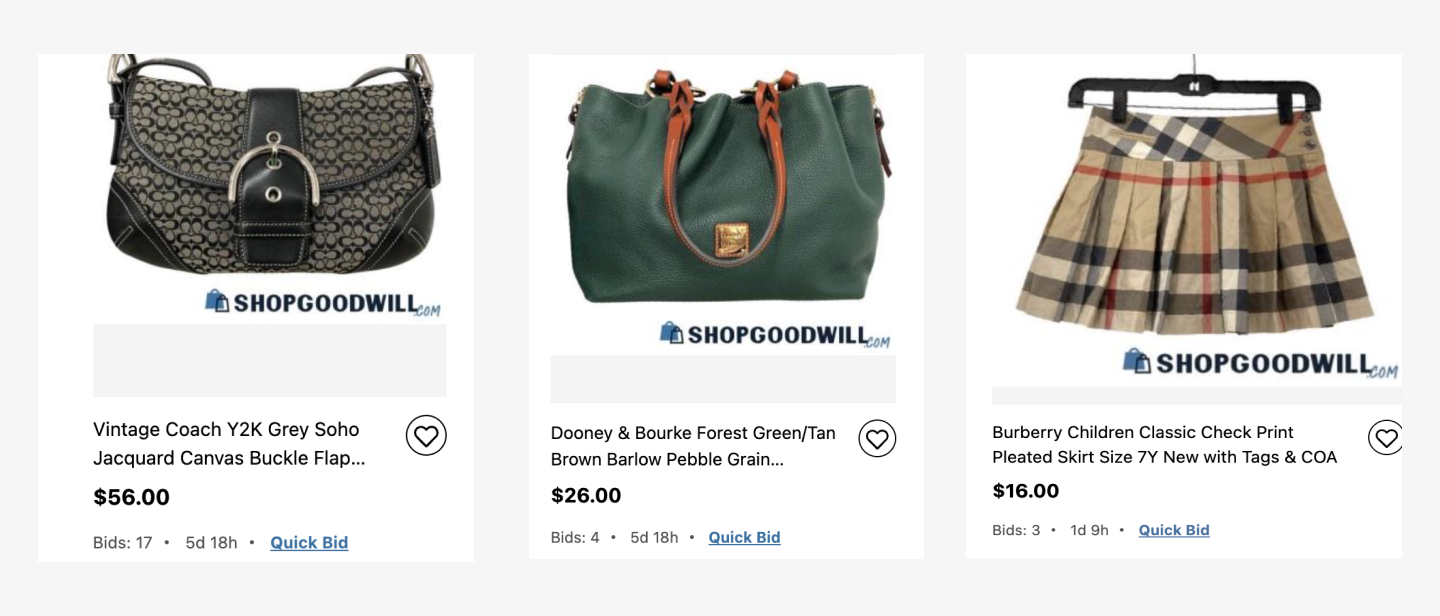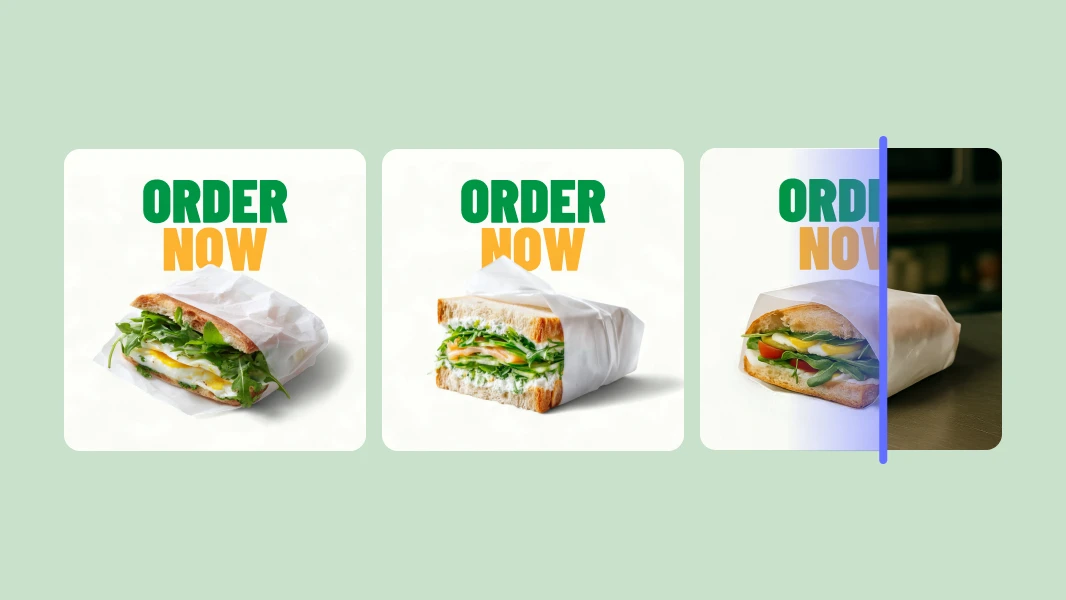Why consistent product photos drive brand growth
It takes just 13 milliseconds for the brain to process an image, according to research from MIT. Every inconsistent product photo signals unprofessionalism, training customers not to trust your brand, which reduces your brand equity over time.
Visual consistency in product photography changes that outcome. It drives business growth through brand recognition, customer trust, and higher conversions. Brands like Adidas maintain 9% year-over-year growth partly through visual consistency strategies.
AI product photography scales this consistency, and brands are increasingly turning to AI workflows to manage growing catalogs. Secondhand marketplace GoodBuy Gear standardized over 42,000 products using AI-powered image editing, achieving 23% higher conversion rates.
Photoroom is your AI-powered partner for e-commerce and helps small and large enterprise brands scale product visuals using branded templates and batch editing through both a web app and API integrations.
This article shows you why product visual consistency is a growth lever and how AI can help your business produce consistent visuals at scale.
What's the business impact of inconsistent product photos?
Inconsistent product photos cost you twice: once in lost sales, again in wasted resources fixing the problem. Here are the three business problems they create:
Brand dilution across channels: When your product listing images appear differently on Amazon versus your website, it creates mixed signals about who you are and what you stand for, which affects your brand awareness, weakens recognition, and delays buying decisions.
Lost buyer confidence: Research shows that inconsistent product images are more difficult to process mentally, which reduces customer trust in your brand. Returns also spike when there’s an inconsistency between the image and the actual product. Each return means lost sales, extra delivery expenses, and damaged online reputation.
Operational waste: Your teams spend hours re-shooting products and fixing images on specific brand channels. These costs multiply with your catalog size. Even if only 5% of your 10,000 SKUs have image problems, fixing 500 products is a significant task.
When photographers use different methods or your editing process isn’t standardized, visual presentation will vary across your products. Photoroom automates visual standardization for enterprise retailers, ensuring consistent quality across thousands of products and multiple sales channels.
Talk with our sales team about Photoroom's AI workflow for enterprises →

How does visual consistency drive business growth?
Visual consistency drives growth by making your brand instantly recognizable and trustworthy, while also boosting conversions, reducing returns, and cutting creative overhead.
Image consistency builds brand recognition
The more consistent your brand visuals are across all platforms, the more you reinforce your unique value proposition and build brand awareness. Customers begin recognizing your brand through visuals alone before reading product names or descriptions.
This recognition strengthens differentiation, making your brand the familiar choice in crowded marketplaces. As David Bartfeld, director of e-commerce at Goodwill Baltimore, shares after making images consistent with Photoroom’s Batch Mode feature, “Our customers can look at the 145 Goodwill agencies and tell which photos are ours just by the picture quality alone. We continue to receive praise for it.”
Brand recognition builds customer trust
Visual consistency signals attention to detail, which can create emotional connections that increase the perceived value of your products. A study by ESIC Business & Marketing School found that perceived value has a positive and significant effect on consumer trust.
Consider a company like Nike: every swoosh placement and athlete-focused product image reinforces the same visual language. That consistency helps you recognize the brand instantly and creates what Harvard Business School describes as "brand equity's backbone": consumers develop personal relationships with brands through repeated experiences that build recognition and meaning over time.
Trust drives conversion
Image consistency builds the subconscious trust that drives purchase decisions. Research shows that 80% of customers would rather buy from businesses they trust and relate to. Brands with strong visual consistency have achieved up to 73% higher click-through rates and a 23% increase in conversions.
These results compound. Improved visuals drive online sales. Higher sales fuel revenue growth. Revenue enables market expansion. Expansion strengthens brand position. The cycle continues, powered by consistent imagery.
Product image consistency isn’t only about aesthetics; it drives measurable ROI through recognition and trust. Photoroom enables brands to maintain visual consistency in product photography across thousands of SKUs, turning simple product photos into scalable growth engines.

AI product photography makes consistency scalable
As your catalog grows across multiple markets and channels, manual editing becomes too slow and expensive to sustain. AI prevents these manual bottlenecks by turning your visual standards into a repeatable, self-improving system at scale.
With AI product photography, you can achieve consistent product images in three main ways:
1. Standardize image editing rules
AI enforces consistent backgrounds, angles, lighting, and style across image batches. This reduces variability and human error while creating better cross-team alignment.
Different sales and marketing platforms also require channel-specific image versions. Amazon requires images with pure white backgrounds (RGB 255, 255, 255) and 1000+ pixels. Yet what works on Amazon is rarely effective on Instagram or TikTok, where lifestyle content performs better. AI-powered workflows maintain your brand standards while meeting every platform specification simultaneously.
2. Automate the image editing process
AI product photography turns subjective manual decisions into repeatable automated processes.
Compared to manual workflows, AI product photo automation speeds up editing time. 74% of IT leaders say they save at least 30% of their time with automation. Our data shows that some e-commerce teams editing hundreds of thousands of images save up to 50,000 hours annually by using the Photoroom API to automate background removal, with brands like Valuence Japan cutting monthly editing from 800 to 200 hours.
Faster workflows mean faster time-to-market, launching ahead of competitors, and freeing your creative team for growth-focused work like A/B testing and developing campaigns.
3. Improve brand standards automatically
AI systems create a positive feedback loop. They capture and apply brand inputs like "less shadow" or "warmer lighting," collect feedback across product categories, and become better at anticipating your brand’s style.
This type of adaptive learning leads to AI product photos that are brand-aligned over time, with less manual correction. Each round of tasks improves the AI model, feeding the next iteration with better rules and learned preferences.
The system also grows with your catalog. It maintains consistency as product volume increases, while reducing the operational costs of manual oversight. Enterprise teams adopting AI for product visuals have seen up to a 93% reduction in editing costs.
While manual editing is a great process for personalized creative editing, using an AI-powered product photography workflow automation is the only way to consistently scale product visuals. Photoroom provides AI solutions that turn the product image editing process from an expensive task into a competitive advantage for scaling brands.
How Photoroom scales visual consistency with AI product photo automation
Photoroom is the AI product photography solution that provides the infrastructure for enterprise brands to maintain visual consistency, offering a suite of AI tools for e-commerce that deliver high-quality results.
Here’s how enterprise teams use Photoroom to produce consistent product photos:
Edit multiple images with Batch Mode: Apply identical edits to hundreds of products simultaneously, in minutes—same margins, shadows, lighting, and backgrounds. Use Batch Mode in the web app to process entire catalogs in minutes.
Run smooth API integrations: Connect the Photoroom API directly to your Product Information Management (PIM), Digital Asset Management (DAM), or e-commerce platform to automatically standardize editing and create professional on-brand images.
Create once with smart templates: Turn your visual standards into reusable assets by applying templates across product lines. This ensures consistency regardless of who's creating images on your team.
Maintain standards with brand kit. Set your brand elements and guidelines, so your team can easily apply them across all outputs. This way, colors, fonts, logos, and spacing rules stay consistent whether you're processing one image or ten thousand.
Second-hand marketplace Label Emmaüs, operating over 400 groups in 40+ countries, integrated the Photoroom API to enhance inconsistent product photos from diverse sellers. This move to AI product photos significantly improved conversion across product categories: 56% for fashion, 34% for home products, and 12% for high-tech. Customers now describe the marketplace as "cleaner and more professional."
Photoroom makes professional consistency accessible to e-commerce enterprise brands of any size that want to scale product photography without increasing headcount.
Make visual consistency in product photography your competitive advantage
Product visual consistency is a strategic advantage that drives commerce growth through recognition, trust, and conversion. As your SKU volume grows and marketing channels expand, you’ll need to invest in a visual platform that automates image editing for large product catalogs.
Photoroom provides the editing infrastructure that modern commerce demands for scaling product image consistency. It’s fast, offers batch processing on the web app and API, allows for custom integrations, and maintains optimal performance for high product volumes.




Design your next great image
Whether you're selling, promoting, or posting, bring your idea to life with a design that stands out.


















